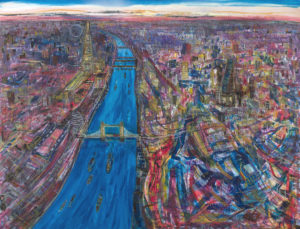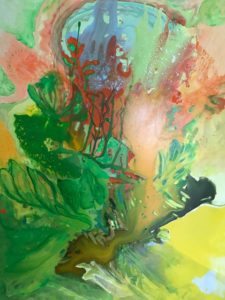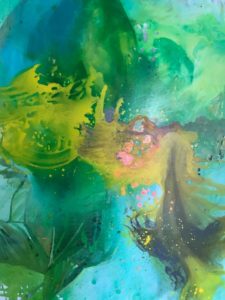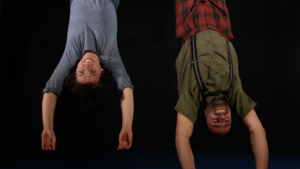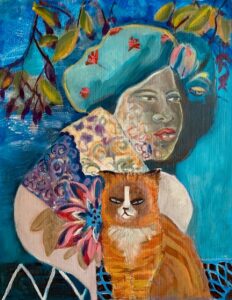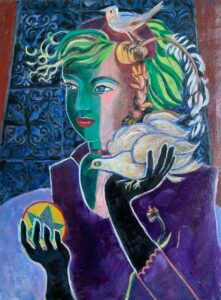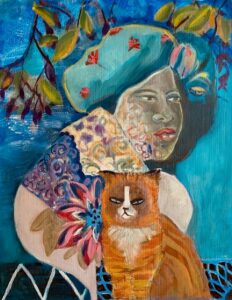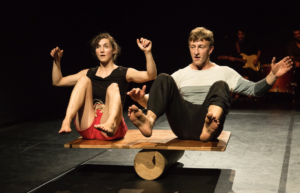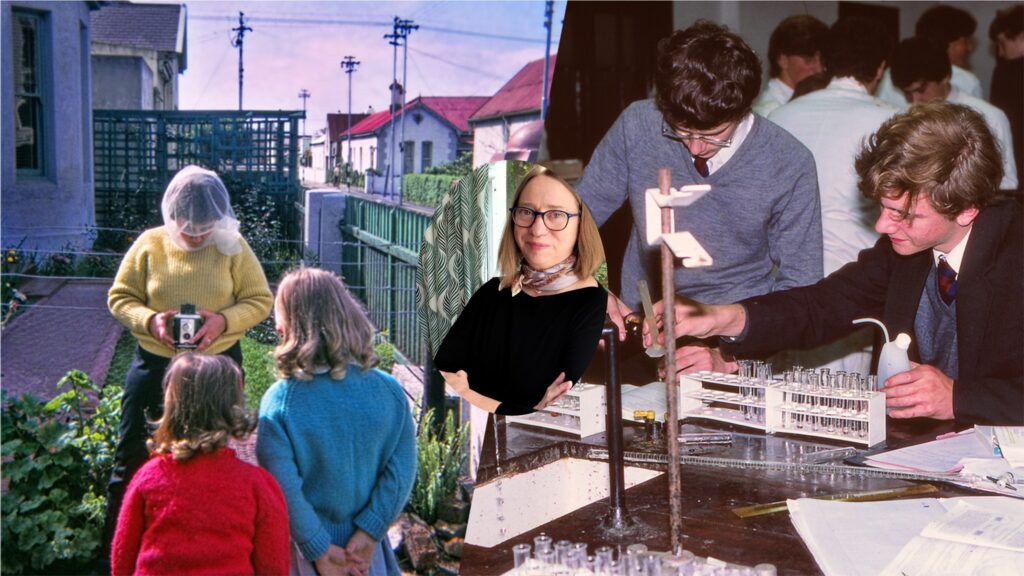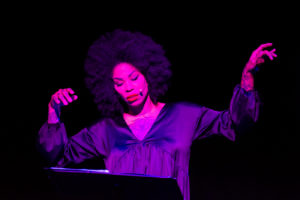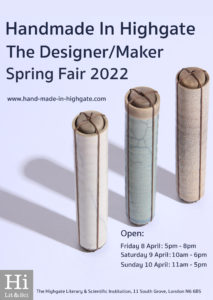
Handmade in Highgate is back on 8 – 10 April, for the Spring Fair. The Highgate Literary and Scientific Institution will feature up to 30 of the UK’s finest designers/makers and artists. As an added bonus this year the historic library will be open for a book sale on Saturday 9 April and Sunday 10 April.
The opening times will be:
Friday 8 April: 5pm – 8pm
Saturday 9 April: 10am – 6pm
Sunday 10 April: 11am – 5pm

Handmade in Highgate is back on 8 – 10 April, for the Spring Fair. The Highgate Literary and Scientific Institution will feature up to 30 of the UK’s finest designers/makers and artists. As an added bonus this year the historic library will be open for a book sale on Saturday 9 April and Sunday 10 April.
The opening times will be:
Friday 8 April: 5pm – 8pm
Saturday 9 April: 10am – 6pm
Sunday 10 April: 11am – 5pm

Handmade in Highgate is back on 8 – 10 April, for the Spring Fair. The Highgate Literary and Scientific Institution will feature up to 30 of the UK’s finest designers/makers and artists. As an added bonus this year the historic library will be open for a book sale on Saturday 9 April and Sunday 10 April.
The opening times will be:
Friday 8 April: 5pm – 8pm
Saturday 9 April: 10am – 6pm
Sunday 10 April: 11am – 5pm
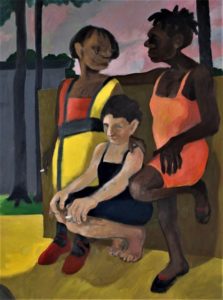
These three artists, friends since art college, share a common interest in figurative and landscape themes, their work reflecting a love of both traditional painting and its modern counterpart.
The inspiration for Ken Gallagher’s work is his family in Ireland and the moody Donegal landscape. Figures working the land or sitting at a table are familiar subjects in his drawings and heavily worked etchings. His London work is motivated by the landscape and aspects of day to day life in the city.
John Mortimer’s work is mainly concerned with the urban and rural landscape and the human figure. All his works begin with drawing directly from the subject and later he develops his ideas in his studio where the challenge is to make pictorial sense from what is essentially visual chaos. In recent years, John has worked on a series of self-portrait images, painting directly from life, a subject he first approached in his late fifties.
Anthony Taylor is strongly influenced by expressionist painting, but he has always sought an individual approach, believing that experience and observation are the bedrocks of meaningful work. He is a keen lover of the outdoors, in particular the high moorland tracts and rugged landscapes found in the North West of England. His recent landscape work, featuring old and decrepit dry-stone walls, makes a striking contrast to the paintings of the dry-stone walls – the paret seca – of Minorca, which he recorded whilst there on holiday.
About the artists: Ken Gallagher studied at Horsey College of Art and the Royal Academy Schools, London. He lives in East London, dividing his time between Ireland and England. John Mortimer studied at Accrington College, Liverpool Polytechnic Faculty of Art and Design and the Royal Academy Schools. He is based in East London. Anthony Taylor is a northern based artist who trained at Accrington College and Liverpool College of Art. He has exhibited widely throughout the North West of England having held solo shows in Liverpool, Bury, Manchester, Leeds and many other venues. His work is in both private and public collections.
For further information about any of the artists please contact Anthony Taylor anthony_taylor22@hotmail.com
Exhibition continues until 7 April.

These three artists, friends since art college, share a common interest in figurative and landscape themes, their work reflecting a love of both traditional painting and its modern counterpart.
The inspiration for Ken Gallagher’s work is his family in Ireland and the moody Donegal landscape. Figures working the land or sitting at a table are familiar subjects in his drawings and heavily worked etchings. His London work is motivated by the landscape and aspects of day to day life in the city.
John Mortimer’s work is mainly concerned with the urban and rural landscape and the human figure. All his works begin with drawing directly from the subject and later he develops his ideas in his studio where the challenge is to make pictorial sense from what is essentially visual chaos. In recent years, John has worked on a series of self-portrait images, painting directly from life, a subject he first approached in his late fifties.
Anthony Taylor is strongly influenced by expressionist painting, but he has always sought an individual approach, believing that experience and observation are the bedrocks of meaningful work. He is a keen lover of the outdoors, in particular the high moorland tracts and rugged landscapes found in the North West of England. His recent landscape work, featuring old and decrepit dry-stone walls, makes a striking contrast to the paintings of the dry-stone walls – the paret seca – of Minorca, which he recorded whilst there on holiday.
About the artists: Ken Gallagher studied at Horsey College of Art and the Royal Academy Schools, London. He lives in East London, dividing his time between Ireland and England. John Mortimer studied at Accrington College, Liverpool Polytechnic Faculty of Art and Design and the Royal Academy Schools. He is based in East London. Anthony Taylor is a northern based artist who trained at Accrington College and Liverpool College of Art. He has exhibited widely throughout the North West of England having held solo shows in Liverpool, Bury, Manchester, Leeds and many other venues. His work is in both private and public collections.
For further information about any of the artists please contact Anthony Taylor anthony_taylor22@hotmail.com
Exhibition continues until 7 April.
 Anthony Taylor, Girl In A Mondrian Dress
Anthony Taylor, Girl In A Mondrian Dress
These three artists, friends since art college, share a common interest in figurative and landscape themes, their work reflecting a love of both traditional painting and its modern counterpart.
The inspiration for Ken Gallagher’s work is his family in Ireland and the moody Donegal landscape. Figures working the land or sitting at a table are familiar subjects in his drawings and heavily worked etchings. His London work is motivated by the landscape and aspects of day to day life in the city.
John Mortimer’s work is mainly concerned with the urban and rural landscape and the human figure. All his works begin with drawing directly from the subject and later he develops his ideas in his studio where the challenge is to make pictorial sense from what is essentially visual chaos. In recent years, John has worked on a series of self-portrait images, painting directly from life, a subject he first approached in his late fifties.
Anthony Taylor is strongly influenced by expressionist painting, but he has always sought an individual approach, believing that experience and observation are the bedrocks of meaningful work. He is a keen lover of the outdoors, in particular the high moorland tracts and rugged landscapes found in the North West of England. His recent landscape work, featuring old and decrepit dry-stone walls, makes a striking contrast to the paintings of the dry-stone walls – the paret seca – of Minorca, which he recorded whilst there on holiday.
About the artists: Ken Gallagher studied at Horsey College of Art and the Royal Academy Schools, London. He lives in East London, dividing his time between Ireland and England. John Mortimer studied at Accrington College, Liverpool Polytechnic Faculty of Art and Design and the Royal Academy Schools. He is based in East London. Anthony Taylor is a northern based artist who trained at Accrington College and Liverpool College of Art. He has exhibited widely throughout the North West of England having held solo shows in Liverpool, Bury, Manchester, Leeds and many other venues. His work is in both private and public collections.
For further information about any of the artists please contact Anthony Taylor anthony_taylor22@hotmail.com
Exhibition continues until 7 April.

These three artists, friends since art college, share a common interest in figurative and landscape themes, their work reflecting a love of both traditional painting and its modern counterpart.
The inspiration for Ken Gallagher’s work is his family in Ireland and the moody Donegal landscape. Figures working the land or sitting at a table are familiar subjects in his drawings and heavily worked etchings. His London work is motivated by the landscape and aspects of day to day life in the city.
John Mortimer’s work is mainly concerned with the urban and rural landscape and the human figure. All his works begin with drawing directly from the subject and later he develops his ideas in his studio where the challenge is to make pictorial sense from what is essentially visual chaos. In recent years, John has worked on a series of self-portrait images, painting directly from life, a subject he first approached in his late fifties.
Anthony Taylor is strongly influenced by expressionist painting, but he has always sought an individual approach, believing that experience and observation are the bedrocks of meaningful work. He is a keen lover of the outdoors, in particular the high moorland tracts and rugged landscapes found in the North West of England. His recent landscape work, featuring old and decrepit dry-stone walls, makes a striking contrast to the paintings of the dry-stone walls – the paret seca – of Minorca, which he recorded whilst there on holiday.
About the artists: Ken Gallagher studied at Horsey College of Art and the Royal Academy Schools, London. He lives in East London, dividing his time between Ireland and England. John Mortimer studied at Accrington College, Liverpool Polytechnic Faculty of Art and Design and the Royal Academy Schools. He is based in East London. Anthony Taylor is a northern based artist who trained at Accrington College and Liverpool College of Art. He has exhibited widely throughout the North West of England having held solo shows in Liverpool, Bury, Manchester, Leeds and many other venues. His work is in both private and public collections.
For further information about any of the artists please contact Anthony Taylor anthony_taylor22@hotmail.com
Exhibition continues until 7 April.

These three artists, friends since art college, share a common interest in figurative and landscape themes, their work reflecting a love of both traditional painting and its modern counterpart.
The inspiration for Ken Gallagher’s work is his family in Ireland and the moody Donegal landscape. Figures working the land or sitting at a table are familiar subjects in his drawings and heavily worked etchings. His London work is motivated by the landscape and aspects of day to day life in the city.
John Mortimer’s work is mainly concerned with the urban and rural landscape and the human figure. All his works begin with drawing directly from the subject and later he develops his ideas in his studio where the challenge is to make pictorial sense from what is essentially visual chaos. In recent years, John has worked on a series of self-portrait images, painting directly from life, a subject he first approached in his late fifties.
Anthony Taylor is strongly influenced by expressionist painting, but he has always sought an individual approach, believing that experience and observation are the bedrocks of meaningful work. He is a keen lover of the outdoors, in particular the high moorland tracts and rugged landscapes found in the North West of England. His recent landscape work, featuring old and decrepit dry-stone walls, makes a striking contrast to the paintings of the dry-stone walls – the paret seca – of Minorca, which he recorded whilst there on holiday.
About the artists: Ken Gallagher studied at Horsey College of Art and the Royal Academy Schools, London. He lives in East London, dividing his time between Ireland and England. John Mortimer studied at Accrington College, Liverpool Polytechnic Faculty of Art and Design and the Royal Academy Schools. He is based in East London. Anthony Taylor is a northern based artist who trained at Accrington College and Liverpool College of Art. He has exhibited widely throughout the North West of England having held solo shows in Liverpool, Bury, Manchester, Leeds and many other venues. His work is in both private and public collections.
For further information about any of the artists please contact Anthony Taylor anthony_taylor22@hotmail.com
Exhibition continues until 7 April.
Annual General Meeting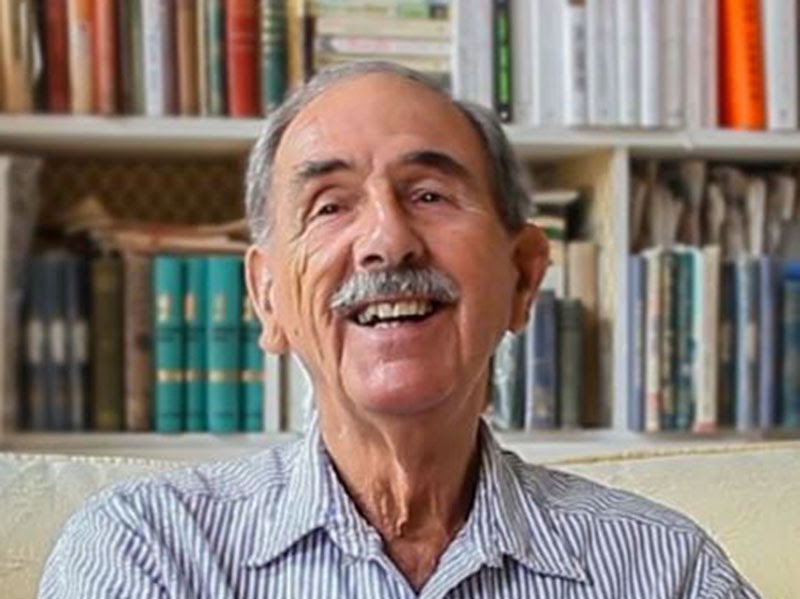
The Annual General Meeting of the Highgate Society will take place on Wednesday 11th May at 7.00 pm at the Jackson’s Lane Arts Centre. The guest speaker will be the author and journalist Hunter Davies.
For details:
https://mcusercontent.com/2985557cc2df15c446f059bef/files/09a3cf18-c103-30a8-96db-6f1a2bf1069b/AGM_poster_draft_for_final_approval_334680_.pdf

These three artists, friends since art college, share a common interest in figurative and landscape themes, their work reflecting a love of both traditional painting and its modern counterpart.
The inspiration for Ken Gallagher’s work is his family in Ireland and the moody Donegal landscape. Figures working the land or sitting at a table are familiar subjects in his drawings and heavily worked etchings. His London work is motivated by the landscape and aspects of day to day life in the city.
John Mortimer’s work is mainly concerned with the urban and rural landscape and the human figure. All his works begin with drawing directly from the subject and later he develops his ideas in his studio where the challenge is to make pictorial sense from what is essentially visual chaos. In recent years, John has worked on a series of self-portrait images, painting directly from life, a subject he first approached in his late fifties.
Anthony Taylor is strongly influenced by expressionist painting, but he has always sought an individual approach, believing that experience and observation are the bedrocks of meaningful work. He is a keen lover of the outdoors, in particular the high moorland tracts and rugged landscapes found in the North West of England. His recent landscape work, featuring old and decrepit dry-stone walls, makes a striking contrast to the paintings of the dry-stone walls – the paret seca – of Minorca, which he recorded whilst there on holiday.
About the artists: Ken Gallagher studied at Horsey College of Art and the Royal Academy Schools, London. He lives in East London, dividing his time between Ireland and England. John Mortimer studied at Accrington College, Liverpool Polytechnic Faculty of Art and Design and the Royal Academy Schools. He is based in East London. Anthony Taylor is a northern based artist who trained at Accrington College and Liverpool College of Art. He has exhibited widely throughout the North West of England having held solo shows in Liverpool, Bury, Manchester, Leeds and many other venues. His work is in both private and public collections.
For further information about any of the artists please contact Anthony Taylor anthony_taylor22@hotmail.com
Exhibition continues until 7 April.

These three artists, friends since art college, share a common interest in figurative and landscape themes, their work reflecting a love of both traditional painting and its modern counterpart.
The inspiration for Ken Gallagher’s work is his family in Ireland and the moody Donegal landscape. Figures working the land or sitting at a table are familiar subjects in his drawings and heavily worked etchings. His London work is motivated by the landscape and aspects of day to day life in the city.
John Mortimer’s work is mainly concerned with the urban and rural landscape and the human figure. All his works begin with drawing directly from the subject and later he develops his ideas in his studio where the challenge is to make pictorial sense from what is essentially visual chaos. In recent years, John has worked on a series of self-portrait images, painting directly from life, a subject he first approached in his late fifties.
Anthony Taylor is strongly influenced by expressionist painting, but he has always sought an individual approach, believing that experience and observation are the bedrocks of meaningful work. He is a keen lover of the outdoors, in particular the high moorland tracts and rugged landscapes found in the North West of England. His recent landscape work, featuring old and decrepit dry-stone walls, makes a striking contrast to the paintings of the dry-stone walls – the paret seca – of Minorca, which he recorded whilst there on holiday.
About the artists: Ken Gallagher studied at Horsey College of Art and the Royal Academy Schools, London. He lives in East London, dividing his time between Ireland and England. John Mortimer studied at Accrington College, Liverpool Polytechnic Faculty of Art and Design and the Royal Academy Schools. He is based in East London. Anthony Taylor is a northern based artist who trained at Accrington College and Liverpool College of Art. He has exhibited widely throughout the North West of England having held solo shows in Liverpool, Bury, Manchester, Leeds and many other venues. His work is in both private and public collections.
For further information about any of the artists please contact Anthony Taylor anthony_taylor22@hotmail.com
Exhibition continues until 7 April.

These three artists, friends since art college, share a common interest in figurative and landscape themes, their work reflecting a love of both traditional painting and its modern counterpart.
The inspiration for Ken Gallagher’s work is his family in Ireland and the moody Donegal landscape. Figures working the land or sitting at a table are familiar subjects in his drawings and heavily worked etchings. His London work is motivated by the landscape and aspects of day to day life in the city.
John Mortimer’s work is mainly concerned with the urban and rural landscape and the human figure. All his works begin with drawing directly from the subject and later he develops his ideas in his studio where the challenge is to make pictorial sense from what is essentially visual chaos. In recent years, John has worked on a series of self-portrait images, painting directly from life, a subject he first approached in his late fifties.
Anthony Taylor is strongly influenced by expressionist painting, but he has always sought an individual approach, believing that experience and observation are the bedrocks of meaningful work. He is a keen lover of the outdoors, in particular the high moorland tracts and rugged landscapes found in the North West of England. His recent landscape work, featuring old and decrepit dry-stone walls, makes a striking contrast to the paintings of the dry-stone walls – the paret seca – of Minorca, which he recorded whilst there on holiday.
About the artists: Ken Gallagher studied at Horsey College of Art and the Royal Academy Schools, London. He lives in East London, dividing his time between Ireland and England. John Mortimer studied at Accrington College, Liverpool Polytechnic Faculty of Art and Design and the Royal Academy Schools. He is based in East London. Anthony Taylor is a northern based artist who trained at Accrington College and Liverpool College of Art. He has exhibited widely throughout the North West of England having held solo shows in Liverpool, Bury, Manchester, Leeds and many other venues. His work is in both private and public collections.
For further information about any of the artists please contact Anthony Taylor anthony_taylor22@hotmail.com
Exhibition continues until 7 April.
 Anthony Taylor, Girl In A Mondrian Dress
Anthony Taylor, Girl In A Mondrian Dress
These three artists, friends since art college, share a common interest in figurative and landscape themes, their work reflecting a love of both traditional painting and its modern counterpart.
The inspiration for Ken Gallagher’s work is his family in Ireland and the moody Donegal landscape. Figures working the land or sitting at a table are familiar subjects in his drawings and heavily worked etchings. His London work is motivated by the landscape and aspects of day to day life in the city.
John Mortimer’s work is mainly concerned with the urban and rural landscape and the human figure. All his works begin with drawing directly from the subject and later he develops his ideas in his studio where the challenge is to make pictorial sense from what is essentially visual chaos. In recent years, John has worked on a series of self-portrait images, painting directly from life, a subject he first approached in his late fifties.
Anthony Taylor is strongly influenced by expressionist painting, but he has always sought an individual approach, believing that experience and observation are the bedrocks of meaningful work. He is a keen lover of the outdoors, in particular the high moorland tracts and rugged landscapes found in the North West of England. His recent landscape work, featuring old and decrepit dry-stone walls, makes a striking contrast to the paintings of the dry-stone walls – the paret seca – of Minorca, which he recorded whilst there on holiday.
About the artists: Ken Gallagher studied at Horsey College of Art and the Royal Academy Schools, London. He lives in East London, dividing his time between Ireland and England. John Mortimer studied at Accrington College, Liverpool Polytechnic Faculty of Art and Design and the Royal Academy Schools. He is based in East London. Anthony Taylor is a northern based artist who trained at Accrington College and Liverpool College of Art. He has exhibited widely throughout the North West of England having held solo shows in Liverpool, Bury, Manchester, Leeds and many other venues. His work is in both private and public collections.
For further information about any of the artists please contact Anthony Taylor anthony_taylor22@hotmail.com
Exhibition continues until 7 April.

These three artists, friends since art college, share a common interest in figurative and landscape themes, their work reflecting a love of both traditional painting and its modern counterpart.
The inspiration for Ken Gallagher’s work is his family in Ireland and the moody Donegal landscape. Figures working the land or sitting at a table are familiar subjects in his drawings and heavily worked etchings. His London work is motivated by the landscape and aspects of day to day life in the city.
John Mortimer’s work is mainly concerned with the urban and rural landscape and the human figure. All his works begin with drawing directly from the subject and later he develops his ideas in his studio where the challenge is to make pictorial sense from what is essentially visual chaos. In recent years, John has worked on a series of self-portrait images, painting directly from life, a subject he first approached in his late fifties.
Anthony Taylor is strongly influenced by expressionist painting, but he has always sought an individual approach, believing that experience and observation are the bedrocks of meaningful work. He is a keen lover of the outdoors, in particular the high moorland tracts and rugged landscapes found in the North West of England. His recent landscape work, featuring old and decrepit dry-stone walls, makes a striking contrast to the paintings of the dry-stone walls – the paret seca – of Minorca, which he recorded whilst there on holiday.
About the artists: Ken Gallagher studied at Horsey College of Art and the Royal Academy Schools, London. He lives in East London, dividing his time between Ireland and England. John Mortimer studied at Accrington College, Liverpool Polytechnic Faculty of Art and Design and the Royal Academy Schools. He is based in East London. Anthony Taylor is a northern based artist who trained at Accrington College and Liverpool College of Art. He has exhibited widely throughout the North West of England having held solo shows in Liverpool, Bury, Manchester, Leeds and many other venues. His work is in both private and public collections.
For further information about any of the artists please contact Anthony Taylor anthony_taylor22@hotmail.com
Exhibition continues until 7 April.

These three artists, friends since art college, share a common interest in figurative and landscape themes, their work reflecting a love of both traditional painting and its modern counterpart.
The inspiration for Ken Gallagher’s work is his family in Ireland and the moody Donegal landscape. Figures working the land or sitting at a table are familiar subjects in his drawings and heavily worked etchings. His London work is motivated by the landscape and aspects of day to day life in the city.
John Mortimer’s work is mainly concerned with the urban and rural landscape and the human figure. All his works begin with drawing directly from the subject and later he develops his ideas in his studio where the challenge is to make pictorial sense from what is essentially visual chaos. In recent years, John has worked on a series of self-portrait images, painting directly from life, a subject he first approached in his late fifties.
Anthony Taylor is strongly influenced by expressionist painting, but he has always sought an individual approach, believing that experience and observation are the bedrocks of meaningful work. He is a keen lover of the outdoors, in particular the high moorland tracts and rugged landscapes found in the North West of England. His recent landscape work, featuring old and decrepit dry-stone walls, makes a striking contrast to the paintings of the dry-stone walls – the paret seca – of Minorca, which he recorded whilst there on holiday.
About the artists: Ken Gallagher studied at Horsey College of Art and the Royal Academy Schools, London. He lives in East London, dividing his time between Ireland and England. John Mortimer studied at Accrington College, Liverpool Polytechnic Faculty of Art and Design and the Royal Academy Schools. He is based in East London. Anthony Taylor is a northern based artist who trained at Accrington College and Liverpool College of Art. He has exhibited widely throughout the North West of England having held solo shows in Liverpool, Bury, Manchester, Leeds and many other venues. His work is in both private and public collections.
For further information about any of the artists please contact Anthony Taylor anthony_taylor22@hotmail.com
Exhibition continues until 7 April.

These three artists, friends since art college, share a common interest in figurative and landscape themes, their work reflecting a love of both traditional painting and its modern counterpart.
The inspiration for Ken Gallagher’s work is his family in Ireland and the moody Donegal landscape. Figures working the land or sitting at a table are familiar subjects in his drawings and heavily worked etchings. His London work is motivated by the landscape and aspects of day to day life in the city.
John Mortimer’s work is mainly concerned with the urban and rural landscape and the human figure. All his works begin with drawing directly from the subject and later he develops his ideas in his studio where the challenge is to make pictorial sense from what is essentially visual chaos. In recent years, John has worked on a series of self-portrait images, painting directly from life, a subject he first approached in his late fifties.
Anthony Taylor is strongly influenced by expressionist painting, but he has always sought an individual approach, believing that experience and observation are the bedrocks of meaningful work. He is a keen lover of the outdoors, in particular the high moorland tracts and rugged landscapes found in the North West of England. His recent landscape work, featuring old and decrepit dry-stone walls, makes a striking contrast to the paintings of the dry-stone walls – the paret seca – of Minorca, which he recorded whilst there on holiday.
About the artists: Ken Gallagher studied at Horsey College of Art and the Royal Academy Schools, London. He lives in East London, dividing his time between Ireland and England. John Mortimer studied at Accrington College, Liverpool Polytechnic Faculty of Art and Design and the Royal Academy Schools. He is based in East London. Anthony Taylor is a northern based artist who trained at Accrington College and Liverpool College of Art. He has exhibited widely throughout the North West of England having held solo shows in Liverpool, Bury, Manchester, Leeds and many other venues. His work is in both private and public collections.
For further information about any of the artists please contact Anthony Taylor anthony_taylor22@hotmail.com
Exhibition continues until 7 April.
Tina Leslie – London Dreams – 10-23 June 2022
These oil and mixed-media paintings from London-based artist Tina Leslie speak to each other in their contrasts, both in theme, between city and countryside, and in style, between representative and abstract. The cityscapes capture atmospheric light and show familiar landmarks from unexpected vantage points, while the paintings in the Nature’s Threads series have a viewpoint that is up close, in the tangle of nature itself.
Christina Eberhart: Do you Hear the Flowers Sing?
1-14 July 2022
The title of Christina Eberhart’s exhibition ‘Do you hear the flowers sing?’ is a reference to the work of Anthropologist Natasha Myers, whose study of our interconnectedness with nature has inspired the artist. Plants have an agency and a unique intelligence which needs to be acknowledged.
‘The recognition that plants are breathing us into being, that their exhaling is the possibility of our inhale’ – Natasha Myers
The exhibition includes paintings, drawings, prints and cyanotypes.
The paintings are playful celebrations of colour and shape, and a sensory response to the exuberance found in plant life. Christina Eberhart is exploring and experimenting with how to show nature in art. She invents or paints from memory, then simplifies and refines the imagery, so that the paintings sit at the intersection between representation and abstraction. The intention is to provide a liminal space, with scope for the viewer to respond to them in their own personal way.
Plants and trees are an absolute necessity and integral to our lives and Christina explores and examines our relationship to them. Recent science is making astonishing discoveries about the behaviour of plants: their ability to communicate and procreate while rooted to the spot is helped by their unique sensory faculties and strategic choices of colour, light and environment.
For the works on paper, Christina applies a range of methods and processes that lend themselves particularly well to responding and capturing different types of phenomena and natural elemental influences. She works with plant dyes on textiles, and with an early photographic method called cyanotype.
The artist finds cyanotypes endlessly fascinating because the outcome depends directly on light and water. She will be showing several in the exhibition, and offering a workshop on the subject during the show for those who are interested in making their own.
Included in the exhibition is a series of paintings and drawings depicting crows and ravens, which add an element of ancient naturistic symbolism to the show. In the world of mythology and augury there are countless interpretations pertaining to these clever birds, from foretelling death and renewal to a change in circumstances. Hence they are apt symbols for the challenging times we live in.
Christina Eberhart is an artist living and working in London. She trained at Central St. Martins (2001) and her work has been included in numerous shows in London and abroad and is enjoyed by private collectors.
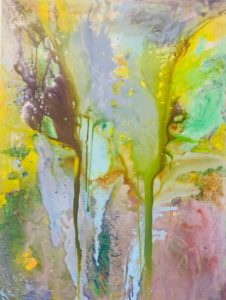 Drop-in Cyanotype workshop Sunday 10 July during Gallery opening hours.
Drop-in Cyanotype workshop Sunday 10 July during Gallery opening hours.
Tina Leslie – London Dreams – 10-23 June 2022
These oil and mixed-media paintings from London-based artist Tina Leslie speak to each other in their contrasts, both in theme, between city and countryside, and in style, between representative and abstract. The cityscapes capture atmospheric light and show familiar landmarks from unexpected vantage points, while the paintings in the Nature’s Threads series have a viewpoint that is up close, in the tangle of nature itself.
Tina Leslie – London Dreams – 10-23 June 2022
These oil and mixed-media paintings from London-based artist Tina Leslie speak to each other in their contrasts, both in theme, between city and countryside, and in style, between representative and abstract. The cityscapes capture atmospheric light and show familiar landmarks from unexpected vantage points, while the paintings in the Nature’s Threads series have a viewpoint that is up close, in the tangle of nature itself.
Tina Leslie – London Dreams – 10-23 June 2022
These oil and mixed-media paintings from London-based artist Tina Leslie speak to each other in their contrasts, both in theme, between city and countryside, and in style, between representative and abstract. The cityscapes capture atmospheric light and show familiar landmarks from unexpected vantage points, while the paintings in the Nature’s Threads series have a viewpoint that is up close, in the tangle of nature itself.
Tina Leslie – London Dreams – 10-23 June 2022
These oil and mixed-media paintings from London-based artist Tina Leslie speak to each other in their contrasts, both in theme, between city and countryside, and in style, between representative and abstract. The cityscapes capture atmospheric light and show familiar landmarks from unexpected vantage points, while the paintings in the Nature’s Threads series have a viewpoint that is up close, in the tangle of nature itself.
Tina Leslie – London Dreams – 10-23 June 2022
These oil and mixed-media paintings from London-based artist Tina Leslie speak to each other in their contrasts, both in theme, between city and countryside, and in style, between representative and abstract. The cityscapes capture atmospheric light and show familiar landmarks from unexpected vantage points, while the paintings in the Nature’s Threads series have a viewpoint that is up close, in the tangle of nature itself.
Tina Leslie – London Dreams – 10-23 June 2022
These oil and mixed-media paintings from London-based artist Tina Leslie speak to each other in their contrasts, both in theme, between city and countryside, and in style, between representative and abstract. The cityscapes capture atmospheric light and show familiar landmarks from unexpected vantage points, while the paintings in the Nature’s Threads series have a viewpoint that is up close, in the tangle of nature itself.
Tina Leslie – London Dreams – 10-23 June 2022
These oil and mixed-media paintings from London-based artist Tina Leslie speak to each other in their contrasts, both in theme, between city and countryside, and in style, between representative and abstract. The cityscapes capture atmospheric light and show familiar landmarks from unexpected vantage points, while the paintings in the Nature’s Threads series have a viewpoint that is up close, in the tangle of nature itself.
Christina Eberhart: Do you Hear the Flowers Sing?
1-14 July 2022
The title of Christina Eberhart’s exhibition ‘Do you hear the flowers sing?’ is a reference to the work of Anthropologist Natasha Myers, whose study of our interconnectedness with nature has inspired the artist. Plants have an agency and a unique intelligence which needs to be acknowledged.
‘The recognition that plants are breathing us into being, that their exhaling is the possibility of our inhale’ – Natasha Myers
The exhibition includes paintings, drawings, prints and cyanotypes.
The paintings are playful celebrations of colour and shape, and a sensory response to the exuberance found in plant life. Christina Eberhart is exploring and experimenting with how to show nature in art. She invents or paints from memory, then simplifies and refines the imagery, so that the paintings sit at the intersection between representation and abstraction. The intention is to provide a liminal space, with scope for the viewer to respond to them in their own personal way.
Plants and trees are an absolute necessity and integral to our lives and Christina explores and examines our relationship to them. Recent science is making astonishing discoveries about the behaviour of plants: their ability to communicate and procreate while rooted to the spot is helped by their unique sensory faculties and strategic choices of colour, light and environment.
For the works on paper, Christina applies a range of methods and processes that lend themselves particularly well to responding and capturing different types of phenomena and natural elemental influences. She works with plant dyes on textiles, and with an early photographic method called cyanotype.
The artist finds cyanotypes endlessly fascinating because the outcome depends directly on light and water. She will be showing several in the exhibition, and offering a workshop on the subject during the show for those who are interested in making their own.
Included in the exhibition is a series of paintings and drawings depicting crows and ravens, which add an element of ancient naturistic symbolism to the show. In the world of mythology and augury there are countless interpretations pertaining to these clever birds, from foretelling death and renewal to a change in circumstances. Hence they are apt symbols for the challenging times we live in.
Christina Eberhart is an artist living and working in London. She trained at Central St. Martins (2001) and her work has been included in numerous shows in London and abroad and is enjoyed by private collectors.
 Drop-in Cyanotype workshop Sunday 10 July during Gallery opening hours.
Drop-in Cyanotype workshop Sunday 10 July during Gallery opening hours.
Christina Eberhart: Do you Hear the Flowers Sing?
1-14 July 2022
The title of Christina Eberhart’s exhibition ‘Do you hear the flowers sing?’ is a reference to the work of Anthropologist Natasha Myers, whose study of our interconnectedness with nature has inspired the artist. Plants have an agency and a unique intelligence which needs to be acknowledged.
‘The recognition that plants are breathing us into being, that their exhaling is the possibility of our inhale’ – Natasha Myers
The exhibition includes paintings, drawings, prints and cyanotypes.
The paintings are playful celebrations of colour and shape, and a sensory response to the exuberance found in plant life. Christina Eberhart is exploring and experimenting with how to show nature in art. She invents or paints from memory, then simplifies and refines the imagery, so that the paintings sit at the intersection between representation and abstraction. The intention is to provide a liminal space, with scope for the viewer to respond to them in their own personal way.
Plants and trees are an absolute necessity and integral to our lives and Christina explores and examines our relationship to them. Recent science is making astonishing discoveries about the behaviour of plants: their ability to communicate and procreate while rooted to the spot is helped by their unique sensory faculties and strategic choices of colour, light and environment.
For the works on paper, Christina applies a range of methods and processes that lend themselves particularly well to responding and capturing different types of phenomena and natural elemental influences. She works with plant dyes on textiles, and with an early photographic method called cyanotype.
The artist finds cyanotypes endlessly fascinating because the outcome depends directly on light and water. She will be showing several in the exhibition, and offering a workshop on the subject during the show for those who are interested in making their own.
Included in the exhibition is a series of paintings and drawings depicting crows and ravens, which add an element of ancient naturistic symbolism to the show. In the world of mythology and augury there are countless interpretations pertaining to these clever birds, from foretelling death and renewal to a change in circumstances. Hence they are apt symbols for the challenging times we live in.
Christina Eberhart is an artist living and working in London. She trained at Central St. Martins (2001) and her work has been included in numerous shows in London and abroad and is enjoyed by private collectors.
Drop-in Cyanotype workshop Sunday 10 July during Gallery opening hours.
Christina Eberhart: Do you Hear the Flowers Sing?
1-14 July 2022
The title of Christina Eberhart’s exhibition ‘Do you hear the flowers sing?’ is a reference to the work of Anthropologist Natasha Myers, whose study of our interconnectedness with nature has inspired the artist. Plants have an agency and a unique intelligence which needs to be acknowledged.
‘The recognition that plants are breathing us into being, that their exhaling is the possibility of our inhale’ – Natasha Myers
The exhibition includes paintings, drawings, prints and cyanotypes.
The paintings are playful celebrations of colour and shape, and a sensory response to the exuberance found in plant life. Christina Eberhart is exploring and experimenting with how to show nature in art. She invents or paints from memory, then simplifies and refines the imagery, so that the paintings sit at the intersection between representation and abstraction. The intention is to provide a liminal space, with scope for the viewer to respond to them in their own personal way.
Plants and trees are an absolute necessity and integral to our lives and Christina explores and examines our relationship to them. Recent science is making astonishing discoveries about the behaviour of plants: their ability to communicate and procreate while rooted to the spot is helped by their unique sensory faculties and strategic choices of colour, light and environment.
For the works on paper, Christina applies a range of methods and processes that lend themselves particularly well to responding and capturing different types of phenomena and natural elemental influences. She works with plant dyes on textiles, and with an early photographic method called cyanotype.
The artist finds cyanotypes endlessly fascinating because the outcome depends directly on light and water. She will be showing several in the exhibition, and offering a workshop on the subject during the show for those who are interested in making their own.
Included in the exhibition is a series of paintings and drawings depicting crows and ravens, which add an element of ancient naturistic symbolism to the show. In the world of mythology and augury there are countless interpretations pertaining to these clever birds, from foretelling death and renewal to a change in circumstances. Hence they are apt symbols for the challenging times we live in.
Christina Eberhart is an artist living and working in London. She trained at Central St. Martins (2001) and her work has been included in numerous shows in London and abroad and is enjoyed by private collectors.
Drop-in Cyanotype workshop Sunday 10 July during Gallery opening hours.
Christina Eberhart: Do you Hear the Flowers Sing?
1-14 July 2022
The title of Christina Eberhart’s exhibition ‘Do you hear the flowers sing?’ is a reference to the work of Anthropologist Natasha Myers, whose study of our interconnectedness with nature has inspired the artist. Plants have an agency and a unique intelligence which needs to be acknowledged.
‘The recognition that plants are breathing us into being, that their exhaling is the possibility of our inhale’ – Natasha Myers
The exhibition includes paintings, drawings, prints and cyanotypes.
The paintings are playful celebrations of colour and shape, and a sensory response to the exuberance found in plant life. Christina Eberhart is exploring and experimenting with how to show nature in art. She invents or paints from memory, then simplifies and refines the imagery, so that the paintings sit at the intersection between representation and abstraction. The intention is to provide a liminal space, with scope for the viewer to respond to them in their own personal way.
Plants and trees are an absolute necessity and integral to our lives and Christina explores and examines our relationship to them. Recent science is making astonishing discoveries about the behaviour of plants: their ability to communicate and procreate while rooted to the spot is helped by their unique sensory faculties and strategic choices of colour, light and environment.
For the works on paper, Christina applies a range of methods and processes that lend themselves particularly well to responding and capturing different types of phenomena and natural elemental influences. She works with plant dyes on textiles, and with an early photographic method called cyanotype.
The artist finds cyanotypes endlessly fascinating because the outcome depends directly on light and water. She will be showing several in the exhibition, and offering a workshop on the subject during the show for those who are interested in making their own.
Included in the exhibition is a series of paintings and drawings depicting crows and ravens, which add an element of ancient naturistic symbolism to the show. In the world of mythology and augury there are countless interpretations pertaining to these clever birds, from foretelling death and renewal to a change in circumstances. Hence they are apt symbols for the challenging times we live in.
Christina Eberhart is an artist living and working in London. She trained at Central St. Martins (2001) and her work has been included in numerous shows in London and abroad and is enjoyed by private collectors.
Drop-in Cyanotype workshop Sunday 10 July during Gallery opening hours.
Christina Eberhart: Do you Hear the Flowers Sing?
1-14 July 2022
The title of Christina Eberhart’s exhibition ‘Do you hear the flowers sing?’ is a reference to the work of Anthropologist Natasha Myers, whose study of our interconnectedness with nature has inspired the artist. Plants have an agency and a unique intelligence which needs to be acknowledged.
‘The recognition that plants are breathing us into being, that their exhaling is the possibility of our inhale’ – Natasha Myers
The exhibition includes paintings, drawings, prints and cyanotypes.
The paintings are playful celebrations of colour and shape, and a sensory response to the exuberance found in plant life. Christina Eberhart is exploring and experimenting with how to show nature in art. She invents or paints from memory, then simplifies and refines the imagery, so that the paintings sit at the intersection between representation and abstraction. The intention is to provide a liminal space, with scope for the viewer to respond to them in their own personal way.
Plants and trees are an absolute necessity and integral to our lives and Christina explores and examines our relationship to them. Recent science is making astonishing discoveries about the behaviour of plants: their ability to communicate and procreate while rooted to the spot is helped by their unique sensory faculties and strategic choices of colour, light and environment.
For the works on paper, Christina applies a range of methods and processes that lend themselves particularly well to responding and capturing different types of phenomena and natural elemental influences. She works with plant dyes on textiles, and with an early photographic method called cyanotype.
The artist finds cyanotypes endlessly fascinating because the outcome depends directly on light and water. She will be showing several in the exhibition, and offering a workshop on the subject during the show for those who are interested in making their own.
Included in the exhibition is a series of paintings and drawings depicting crows and ravens, which add an element of ancient naturistic symbolism to the show. In the world of mythology and augury there are countless interpretations pertaining to these clever birds, from foretelling death and renewal to a change in circumstances. Hence they are apt symbols for the challenging times we live in.
Christina Eberhart is an artist living and working in London. She trained at Central St. Martins (2001) and her work has been included in numerous shows in London and abroad and is enjoyed by private collectors.
Drop-in Cyanotype workshop Sunday 10 July during Gallery opening hours.
Daisy is doing her best to keep her chin up and her head down – but as the first anniversary of her mum’s death approaches she begins to realise grief isnʼt something she can put aside indefinitely, and whether she’s willing to admit it or not, things aren’t fine.
From the silly to the sublime to the scary to the ridiculous, Daisy wrestles (sometimes literally) with her grief – Ian, a 6-foot invisible bald guy with a lot of luggage – eventually discovering that by letting him into her world she is able to reconnect with the memory of her mother.
Combining physical comedy with striking aerial acrobatics and an original, constantly moving aerial set, the debut live show from She Said Jump draws on theatre clown, circus and puppetry to tackle the themes of grief and bereavement with a light and playful touch.
Suitable for ages 8+
Anne McNeill Pulati
Allegories and Metaphors
16-29 September 2022
Anne McNeill Pulati uses the figure as a vehicle, metaphorically and pictorially, in her creative practice. These images are her personal reflections of human experience and spirituality.
Inspiration and research for the work includes ancient and modern belief systems, myths and legends, and cultural variations from around the world, particularly regarding the journey of the soul. For many years she has been interested in metaphor and often incorporates motifs and symbols, ignoring compositional perspectives and using metaphysical landscapes.
Symbols which are commonly understood, such as figures, angels, flowers, rivers, and shadows appear frequently. Anne states that she is principally a colourist. The medium of paint offers her the freedom to tell a narrative through colours, textures and surfaces and allows an immediacy that encourages her imagination.
Art-making has enabled Anne to develop an understanding of the journey in life which she follows. The essence of Quakerism sits in her life’s journey. The making of a painting has come, for her, from a place which at that point is a “story beginning to unfold.”
“Through the act of creativity, I enter a process which delivers something that usually surprises me and also is not consciously designed. In this process, I receive insights and a fulfillment only by entering this activity.”
She believes that we all have gifts that are not our own, but are to share, and which may possibly benefit others. The fact that we should share our gifts is the point, and it is usually fear of failure that stops us. She says: “It doesn’t matter what you share, it’s the intention behind it that people will see.” In showing her work she hopes that those who see it, will be able to ponder on their own responses.
For more information contact the artist: info@annemcneillPulati.com
View the website: https://www.singulart.com/en/artist/anne-mcneill-pulati-10683
To subscribe to newsletter: https://landing.mailerlite.com/webforms/landing/h5d5y8
Contact Co-ordinator for Highgate Gallery: bethrobertson@blueyonder.co.uk
Gallery open Wed-Fri 13:00-17:00, Sat 11:00-16:00, Sun 11:00-17:00
Anne McNeill Pulati
Allegories and Metaphors
16-29 September 2022
Anne McNeill Pulati uses the figure as a vehicle, metaphorically and pictorially, in her creative practice. These images are her personal reflections of human experience and spirituality.
Inspiration and research for the work includes ancient and modern belief systems, myths and legends, and cultural variations from around the world, particularly regarding the journey of the soul. For many years she has been interested in metaphor and often incorporates motifs and symbols, ignoring compositional perspectives and using metaphysical landscapes.
Symbols which are commonly understood, such as figures, angels, flowers, rivers, and shadows appear frequently. Anne states that she is principally a colourist. The medium of paint offers her the freedom to tell a narrative through colours, textures and surfaces and allows an immediacy that encourages her imagination.
Art-making has enabled Anne to develop an understanding of the journey in life which she follows. The essence of Quakerism sits in her life’s journey. The making of a painting has come, for her, from a place which at that point is a “story beginning to unfold.”
“Through the act of creativity, I enter a process which delivers something that usually surprises me and also is not consciously designed. In this process, I receive insights and a fulfillment only by entering this activity.”
She believes that we all have gifts that are not our own, but are to share, and which may possibly benefit others. The fact that we should share our gifts is the point, and it is usually fear of failure that stops us. She says: “It doesn’t matter what you share, it’s the intention behind it that people will see.” In showing her work she hopes that those who see it, will be able to ponder on their own responses.
For more information contact the artist: info@annemcneillPulati.com
View the website: https://www.singulart.com/en/artist/anne-mcneill-pulati-10683
To subscribe to newsletter: https://landing.mailerlite.com/webforms/landing/h5d5y8
Contact Co-ordinator for Highgate Gallery: bethrobertson@blueyonder.co.uk
Gallery open Wed-Fri 13:00-17:00, Sat 11:00-16:00, Sun 11:00-17:00
Anne McNeill Pulati
Allegories and Metaphors
16-29 September 2022
Anne McNeill Pulati uses the figure as a vehicle, metaphorically and pictorially, in her creative practice. These images are her personal reflections of human experience and spirituality.
Inspiration and research for the work includes ancient and modern belief systems, myths and legends, and cultural variations from around the world, particularly regarding the journey of the soul. For many years she has been interested in metaphor and often incorporates motifs and symbols, ignoring compositional perspectives and using metaphysical landscapes.
Symbols which are commonly understood, such as figures, angels, flowers, rivers, and shadows appear frequently. Anne states that she is principally a colourist. The medium of paint offers her the freedom to tell a narrative through colours, textures and surfaces and allows an immediacy that encourages her imagination.
Art-making has enabled Anne to develop an understanding of the journey in life which she follows. The essence of Quakerism sits in her life’s journey. The making of a painting has come, for her, from a place which at that point is a “story beginning to unfold.”
“Through the act of creativity, I enter a process which delivers something that usually surprises me and also is not consciously designed. In this process, I receive insights and a fulfillment only by entering this activity.”
She believes that we all have gifts that are not our own, but are to share, and which may possibly benefit others. The fact that we should share our gifts is the point, and it is usually fear of failure that stops us. She says: “It doesn’t matter what you share, it’s the intention behind it that people will see.” In showing her work she hopes that those who see it, will be able to ponder on their own responses.
For more information contact the artist: info@annemcneillPulati.com
View the website: https://www.singulart.com/en/artist/anne-mcneill-pulati-10683
To subscribe to newsletter: https://landing.mailerlite.com/webforms/landing/h5d5y8
Contact Co-ordinator for Highgate Gallery: bethrobertson@blueyonder.co.uk
Gallery open Wed-Fri 13:00-17:00, Sat 11:00-16:00, Sun 11:00-17:00
How to survive in a world that seems to tip over at any moment?
Two persons, castaways, stranded on the beach of their imagination meet each other, get to know each other, get to trust each other. Together they loose and find balance, using simple, seemingly worthless objects: a wooden board, a cardboard tube, a rope, driftwood. Exploring their limits, they quest for a common equilibrium.
La fin demain is a creative piece of optimism in these strange times. A call for complicity and simplicity.
Zirkus Morsa is known for their fresh, simple and poetic approach to circus arts and stunning balances, both in a figurative context as in their amazing hand to hand technique on the rola bola.
Anne McNeill Pulati
Allegories and Metaphors
16-29 September 2022
Anne McNeill Pulati uses the figure as a vehicle, metaphorically and pictorially, in her creative practice. These images are her personal reflections of human experience and spirituality.
Inspiration and research for the work includes ancient and modern belief systems, myths and legends, and cultural variations from around the world, particularly regarding the journey of the soul. For many years she has been interested in metaphor and often incorporates motifs and symbols, ignoring compositional perspectives and using metaphysical landscapes.
Symbols which are commonly understood, such as figures, angels, flowers, rivers, and shadows appear frequently. Anne states that she is principally a colourist. The medium of paint offers her the freedom to tell a narrative through colours, textures and surfaces and allows an immediacy that encourages her imagination.
Art-making has enabled Anne to develop an understanding of the journey in life which she follows. The essence of Quakerism sits in her life’s journey. The making of a painting has come, for her, from a place which at that point is a “story beginning to unfold.”
“Through the act of creativity, I enter a process which delivers something that usually surprises me and also is not consciously designed. In this process, I receive insights and a fulfillment only by entering this activity.”
She believes that we all have gifts that are not our own, but are to share, and which may possibly benefit others. The fact that we should share our gifts is the point, and it is usually fear of failure that stops us. She says: “It doesn’t matter what you share, it’s the intention behind it that people will see.” In showing her work she hopes that those who see it, will be able to ponder on their own responses.
For more information contact the artist: info@annemcneillPulati.com
View the website: https://www.singulart.com/en/artist/anne-mcneill-pulati-10683
To subscribe to newsletter: https://landing.mailerlite.com/webforms/landing/h5d5y8
Contact Co-ordinator for Highgate Gallery: bethrobertson@blueyonder.co.uk
Gallery open Wed-Fri 13:00-17:00, Sat 11:00-16:00, Sun 11:00-17:00
Suitable for ages 3 – 5
Two hapless storytellers with their big boxes of story and their terrible rhymes share
the magic of shadows, live songs and the unique, loveable puppets TouchedTheatre are renowned for in this totally unique tale of friendship and courage. Join us on a brilliant puppetry adventure to find the mysterious monster that’s made everyone else run away.
Created specially for younger audiences by an award-winning team.
A sure-fire hit for all your little monsters and their friends.
Suitable for ages 3 – 5
Two hapless storytellers with their big boxes of story and their terrible rhymes share
the magic of shadows, live songs and the unique, loveable puppets TouchedTheatre are renowned for in this totally unique tale of friendship and courage. Join us on a brilliant puppetry adventure to find the mysterious monster that’s made everyone else run away.
Created specially for younger audiences by an award-winning team.
A sure-fire hit for all your little monsters and their friends.
Snapshot Photography and Highgate School’s Collection
Elaine Woodbridge has been a volunteer archivist at Highgate School for the last two years working on the school’s photographic slide collection and other projects. Elaine has been fascinated with mid-century slide photographs since she began collecting them more than twenty years ago in South Africa. In her journey with old slides, she has digitised and creatively edited them, shared them on social media, made art and given public talks about them.
Found photographs have an enthusiastic following in popular culture where people do everything from collecting, blogging and making art with them, to trying to reunite them with their original owners. The snapshots of yesterday have also influenced mainstream photography and given rise to new aesthetic traditions. They have great creative potential and have been used by artists in a myriad of ways. But they also contain an intimate and important record of people’s lives and society in past decades, as well as the worlds of work and education. Elaine has read widely on this subject which finds itself at the meeting place of technology, history, popular culture, fine art and archives.
Elaine is completing a Masters degree in Archives and Records Management at the University of Dundee and previously studied Archaeology, Anthropology and Sociology at the University of Cape Town. She is not averse to scratching around in flea markets and dusty drawers for lost photographs. Elaine was delighted to be given the task of working with Highgate’s slide collections, showing school life in the 1960s and 1980s, which she says is a treasure trove of surprising images that open a window on decades past, and is a valuable component of the school’s archive holdings. She asks what we can learn from them and how to understand the collection against the backdrop of British vernacular photography.
Elaine will discuss concepts of snapshot photography and offer behind-the-scenes insights into caring for and archiving a slide collection, covering storage and preservation, copyright and digitisation. Her talk will be illustrated with stunning images from her South African collection, as well as those of Highgate School. She will comment on the value of the collection for bringing to light the school’s changing education technology, built environment and way of life. The 1960s to 1980s was a period on the brink of great technological and digital change. It is a world still cherished in the living memories of many parents and alumni.
Join Elaine Woodbridge online on September 26 to hear more about this intriguing topic and see a glimpse of life at the school back in the day.
After moving from Germany to London over ten years ago to live and work in a more diverse community, renowned sword swallower, circus artist and dazzling burlesque artist Livia Kojo Alour learned that life-long feelings of self-hatred and otherness are part internalised racism and part survival techniques. With a successful career under her stage name MisSa, but tiring of playing someone else full-time, Black Sheep has been long in the making, serving as a candid autobiographical work and a euphoric reclamation of Livia’s identity and ongoing fortitude.
Black Sheep is a story about a Black woman finding love and a testament of personal strength, developed through transcending the white gaze, overcoming institutional racism and leaning into radical vulnerability. Securing her place as a pivotal UK Queer Black voice while telling her story via a heady mix of physical theatre, spoken word, song and sword swallowing, Black Sheep is timely, unsettling and deeply personal.
Suitable for ages 14+
